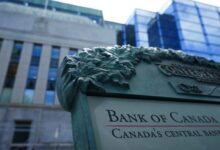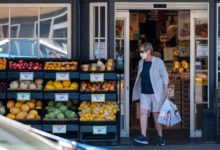Inflation rate spikes to highest level in a decade, at 3.7% in July

Canada’s inflation rate jumped to 3.7 per cent in July, as the cost of shelter and durable goods went up at a fast enough pace to push the cost of living up to its highest level since 2011.
Canada’s inflation rate rises to highest level in a decade, at 3.6%
Statistics Canada reported Wednesday that the homeowners’ replacement cost index, which is related to the price of new homes, went up at an annual pace of 13.7 per cent in July. That’s the fastest uptick on record dating back to 1987.
Prices for upholstered furniture rose 13.4 per cent year over year in July, largely as a result of lower supply and higher input costs. Statistics Canada noted that the introduction of tariffs on upholstered furniture, first implemented in early May 2021, may also have contributed to the increase.
The rising price of cars was also a major contributor to the upside, with passenger vehicle prices rising 5.5 per cent. “The gain was partially attributable to the global shortage of semiconductor chips,” the data agency said.
A scarcity of new cars because of the shortage of microchips is pushing up the price of used cars, too. Winnipeg car dealer Tom Rendille told CBC News it’s a story of basic supply and demand.
“There’s more buyers than there is sellers out there,” he said. “There’s no deals — there won’t be any deals on cars.”
Food prices increased by 1.7 per cent, a much slower pace of gain than seen of late. Within the food category, the price of meat rose by 3.1 per cent while dairy went up by 3.5 per cent. On the opposite side of the ledger, prices for fresh vegetables and fruit actually declined in the past year, by 7.5 per cent and 0.6 per cent, respectively.
The inflation rate went up in every province in Canada, but there were wide regional differences. Saskatchewan had the lowest increase in the country, at 2.3 per cent, while Prince Edward Island saw its cost of living increase by 6.1 per cent. All four provinces east of Quebec had rates higher than the national average.
Statistics Canada says part of the inflation spike is due to comparing prices to the lows seen one year ago, and the Bank of Canada has warned that inflation is likely to hover around three per cent this year because prices are being compared to the drop in prices and spending during the early months of the pandemic.
The 3.7 per cent inflation rate is higher than the 3.1 per cent clocked in June, and also more than the 3.4 per cent that economists were expecting. It ties the previous high-water mark for inflation, which was hit in May 2011. Prior to that, you’d have to go all the way back to 2003 to find a time when Canada’s rate was higher.
On the federal election campaign trial, Conservative Leader Erin O’Toole laid the blame on profligate government spending.
“They want to increase taxes,” he said on a campaign stop in Quebec City, referring to Justin Trudeau and Jagmeet Singh, the leaders of the Liberals and NDP parties. “They are the reason why there’s inflation.”
Speaking to reporters in Vancouver, Liberal Leader Justin Trudeau defended his government’s handling of the economy during the pandemic. “We know that having people’s backs to this pandemic, as opposed to cutting services for people like the Conservatives tried to get us to do was not just the best way to support people through this challenge, but also to ensure that we came back quicker, and stronger than ever before,” he said.
“It is important to note that even with the gaudy headline readings, the two-year pace — which removes base effects — is still running close to two per cent on most major measures,” said Doug Porter with Bank of Montreal.
TD Bank economist James Marple said that while it is important to remember how low the rate was a year ago, the numbers show that prices for many things are clearly increasing.
“The pandemic’s effect on price growth is not only on the supply side, where production disruptions are adding to the cost of manufactured goods such as autos, but also on demand, where policy supports have driven robust spending on housing and durable goods items,” he said.
“We are also now starting to see the impact of faster price growth in re-opening services sectors such as restaurants.”








Redes Sociais - Comentários